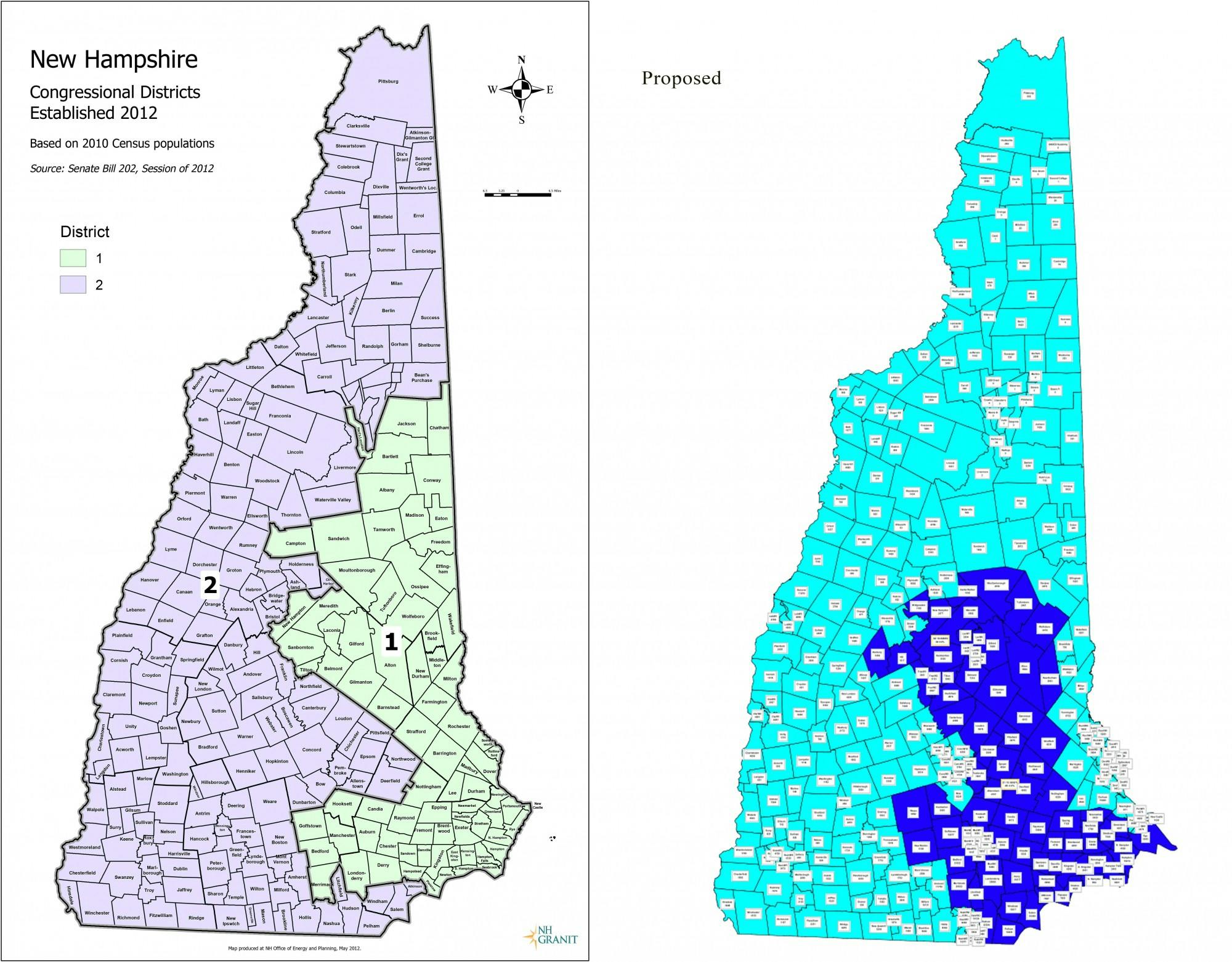As part of the 2022 New Hampshire state House of Representatives’ most recent legislative session, representatives voted on bills that would redraw the state’s congressional, state senate and state executive council districts. H.B. 52 would alter the state’s two congressional districts by redrawing the 1st district, represented by Rep. Chris Pappas, D-N.H., to become more Republican-leaning. Under the same plan, the 2nd district, represented by Rep. Ann McLane Kuster ’78, D-N.H., would become safer for Democrats.
Both districts are currently competitive between the two parties, according to estimates from FiveThirtyEight’s redistricting tracker. Under the proposed plan, the 1st district would lean Republican by nine percentage points and the 2nd would lead Democratic by 10.
The bill was passed by the house on Jan. 5 by a vote of 186-164 nearly along party lines, with 185 Republicans and 1 Democrat voting to pass the map and 158 Democrats and 5 Republicans voting against the map. All four of Hanover’s representatives — Russell Muirhead, Mary Hakken-Phillips, James Murphy and Sharon Nordgren, all Democrats — voted against the bill.
Government professor Linda Fowler said redistricting is a process that occurs at the start of every decade in response to population data from the U.S. Census, where the 435 congressional seats are allocated to states based on their proportional share of the population. Once the seats have been allocated, she added, it is up to the states to draw maps with districts of roughly equal population.
“Data from the 2020 Census shows that the biggest population growth in the state has happened in towns near the Massachusetts border, which are currently represented by the 1st district,” Fowler said. “To get equal population districts, the 1st district has to pass some population to the 2nd district.”
A report sponsored by the New Hampshire chapter of the American Civil Liberties Union shows that equal population districts could be created by moving just one town from the 1st district to the 2nd district. However, under H.B. 52, 75 towns, corresponding to 28.6% of the state’s population, would change districts.
Fowler said that this new map would “violate” 140 years of precedent, as New Hampshire’s congressional districts have largely been left “unchanged” since the 19th century. She added that this map reflects a “larger trend” in redistricting around the country to make seats safer for incumbents.
According to the FiveThirtyEight redistricting tracker, the number of highly competitive seats in states that have completed redistricting has been reduced by six compared to the last decade’s maps, while the number of seats leaning toward either Democrats or Republicans has increased by eight.
However, while the proposed new 1st congressional district currently leans Republican, Fowler said that it could become more competitive later in the 2020s, based on trends of suburban voters in the border towns voting more frequently for Democrats.
Muirhead, who is also a government professor at Dartmouth, said that if signed into law, the congressional maps would be a “partisan gerrymander” with the drawing of two less competitive congressional seats. Muirhead added that by making the seats safer, it makes representatives “less responsive” to their constituents.
“Prior to [current representative] Chris Pappas, no one was able to hold the first congressional district for more than a term,” Muirhead said. “In making safer districts that favor incumbents and the party that holds the seat, it invites representatives that are more extreme than ordinary citizens.”
According to an WMUR report, Pappas said during an interview announcing his reelection bid that he is not concerned about running in a district that may lean more Republican than it currently does. Pappas and Kuster did not respond to requests for comment.
Muirhead said that he believes the proposed districts are “strained” and “geographically tortured,” as the maps “pack” Democratic and Republican leaning towns in different parts of the state together.
“Under this map, Republicans would be packing Democratic towns on the seacoast like Portsmouth and college towns like Durham into a district that also covers Hanover and Mount Washington,” Muirhead said. “We have two oddly shaped districts designed to be a Democratic sink and a Republican sink.”
Democratic representatives and opponents of H.B. 52 Manny Espitia of Nashua and Marjorie Smith of Durham did not respond to requests for comment. Republican representatives Ross Berry of Manchester and Barbara Griffin of Goffstown, both of whom supported the bill, also did not respond to requests for comment.




